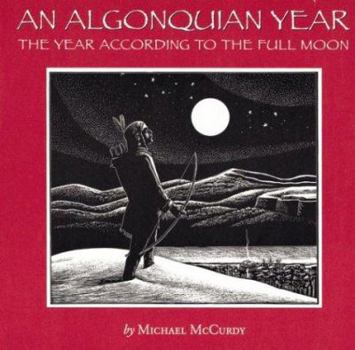An Algonquian Year: The Year According to the Full Moon
As the moon waxes and wanes, her cycles set a pattern of life for those who live beneath her silver glow. For the Northern Algonquians in precolonial America, these rhythms served to measure out the... This description may be from another edition of this product.
Format:Library Binding
Language:English
ISBN:0618007059
ISBN13:9780618007059
Release Date:September 2000
Publisher:Houghton Mifflin
Length:32 Pages
Weight:0.05 lbs.
Dimensions:0.4" x 9.3" x 9.6"
Age Range:4 to 7 years
Grade Range:Preschool to Grade 2
Customer Reviews
1 rating
American Indian culture in An Algonquian Year
Published by Thriftbooks.com User , 23 years ago
Michael McCurdy's book An Algonquian Year: The Year According to the Full Moon outlines how the Algonquian's lives change throughout the year. The book is divided by the months of the calendar (January through December), which seems odd considering the title of this book, and the fact that the moon does not follow this schedule. However, the entry for each month details the types of activities the Algonquians pursue each month and how these activities fit in with the activities of the rest of the year.In his article "The 'Indian Tales': Are They Fish or Fowl?", Norman Williamson defines methods for determining the value of American Indian tales in children's literature. These principles can be applied to An Algonquian Year to determine its value as a way to learn about the Algonquian culture.First, Williamson points out that readers should note the purpose of the story. Is the author writing a story that would be acceptable to the dominant culture of the United States and Canada that has a Native American setting and background, or is the author trying to introduce a new culture that may be foreign to the readers? An Algonquian Year seems to be the result of careful research and an intention to introduce this culture to a new audience. This book does not contain a narrative story; instead, the author states in the introduction that it "concentrates on the daily life of Algonquian tribes found in the northeast of what is now Canada and the United States." No names are given for any of the people, instead only the tribes are named. This emphasis on group rather than personal names reinforces the idea of getting to know the group rather than individuals. Also, this book contains an introduction that gives information about the background of the Algonquians and their names for the different moons. After the story, the author has included a map with the areas where different tribes lived and a bibliography for more information. This bibliography contains books written for both adults and children. Clearly, this is a researched and educational book.Williamson states a problem that many books about Native Americans face. This problem is that "the authors of children's version have committed themselves to a pre-Columbian environment. No child of the dominant culture can relate to this alien environment in a personal way" (71). McCurdy seems aware of this problem and tries in small ways to overcome this difficulty. Instead of focusing only on the activities of the adults, he includes the children as well. For the month of February or "Snow Blinder Moon," he says, "in the villages, the children are growing restless." The readers of An Algonquian Year can understand restless children and identify with this problem. Another example of McCurdy's efforts to relate this culture to the dominant culture is seen in March or "Sap Moon." He explains how sap is collected and made into maple syrup and then adds, "the Algonquian tribes will one day s





